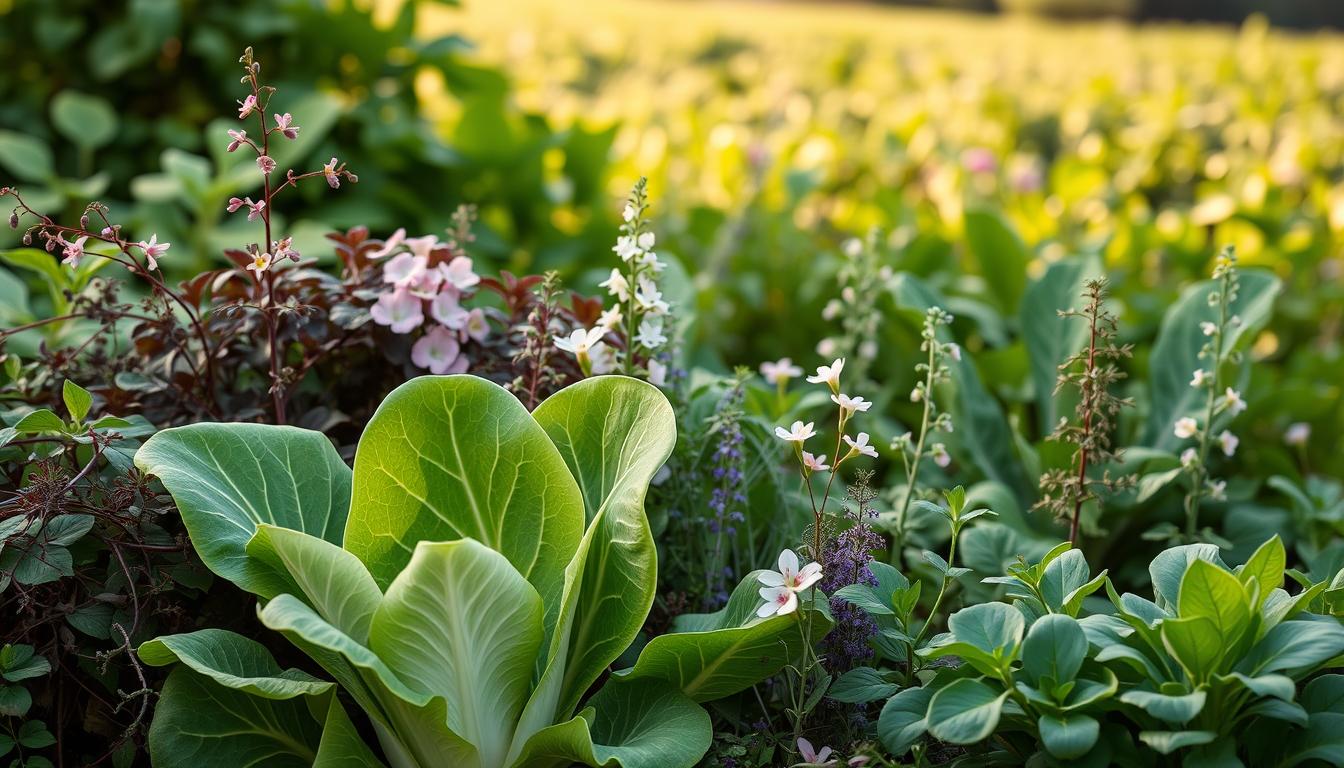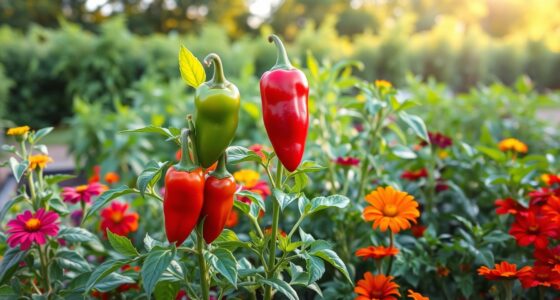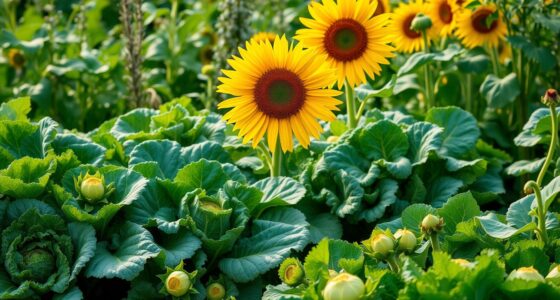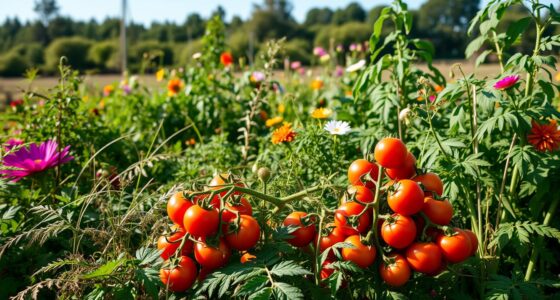You’ve meticulously tended your garden, nurturing every seedling with love and care, yet you find that achieving the perfect harvest feels just out of reach. It’s moments like these that remind us of the incredible artistry in gardening, where the right companions can make all the difference. Enter bok choy, a delightful vegetable known for its tender leaves and versatile flavor, ready to be your culinary hero. But did you know that choosing the best companion plants for bok choy can transform your gardening experience? These planting partners for bok choy not only enhance growth but also ward off pests and foster a thriving ecosystem in your garden. Join me as we explore the magic of companion planting and discover why it matters for your beloved bok choy.
Key Takeaways
- Bok choy thrives in a companion-friendly garden.
- Choosing the right plants can boost growth and yield.
- Companions help in pest management and disease resistance.
- Enhancing the garden ecosystem leads to a more successful harvest.
- Understanding soil compatibility is essential for plant health.
Why Companion Planting Matters for Bok Choy
Understanding the significance of companion planting can transform your bok choy garden into a thriving ecosystem. This approach encourages you to plant different species in proximity, leading to multiple benefits that enhance your gardening experience. A solid bok choy companion planting guide will highlight why careful plant selection is crucial for improved growth and health.
Benefits of Companion Planting
Utilizing companion planting with bok choy creates a beneficial relationship among plants. It promotes nutrient cycling and increased soil fertility. When you choose appropriate bok choy garden companions, you can optimize your yield and health of the plants. These relationships foster biodiversity, which supports a more resilient garden against challenges.
How It Enhances Growth
Incorporating nitrogen-fixing plants alongside bok choy significantly enhances growth. These plants naturally improve the nitrogen content in the soil. As a result, your bok choy benefits from an enriched environment, leading to healthier plants that thrive. This synergy allows you to take full advantage of the available nutrients, improving not just growth rate but also the quality of your harvest.
Pest Control and Disease Resistance
One of the standout advantages of companion planting with bok choy lies in its ability to deter pests and bolster disease resistance. Certain companion plants attract beneficial insects while repelling harmful ones. By integrating these companions into your garden, you foster a more balanced ecosystem, reducing the need for chemical interventions and promoting natural pest management methods.

Ideal Soil Conditions for Bok Choy Companions
To ensure your bok choy flourishes alongside its companion plants, focus on the ideal soil conditions. Understanding the soil’s pH levels, type, and drainage will significantly impact the success of your gardening efforts and enhance the growth of bok choy. Following these bok choy gardening tips will help you create the perfect environment for these plants to thrive.
pH Levels and Nutrient Needs
The pH level of the soil is crucial for bok choy. An ideal pH range of 6.0 to 7.0 promotes optimal nutrient absorption. This balance allows your plants to access essential minerals and vitamins needed for healthy growth. Regularly testing your soil can help maintain the correct pH level, ensuring your bok choy receives the nutrients it needs.
Soil Type Preference
Bok choy prefers a sandy loam soil, known for its excellent drainage capabilities while retaining sufficient moisture and nutrients. This type of soil not only supports rapid growth but also promotes healthier root systems for both bok choy and any companion plants. Consider mixing in organic matter to improve soil structure and nutrient content.
Importance of Drainage
Proper drainage plays a vital role in the health of your bok choy. Waterlogged soil can lead to root rot and other detrimental diseases, hindering growth. Ensuring good drainage allows excess water to escape while keeping the soil adequately moist. Researching ideal soil for bok choy can provide insights into improving drainage through practices like raised beds or incorporating perlite.

Best Companion Plants for Bok Choy
Finding the right companions for your bok choy can make a significant difference in your garden’s success. A thoughtful selection from a bok choy companion plants list can improve growth, enhance flavor, and protect against pests. Here’s a look at the best companion plants for bok choy and how they contribute to a thriving garden.
Herbs That Pair Well with Bok Choy
Herbs offer numerous benefits when planted alongside bok choy. They not only add flavor but also attract beneficial insects that help manage pests. A few excellent choices include:
- Dill: Encourages healthy growth and attracts ladybugs.
- Thyme: A natural repellent for harmful insects, keeping your bok choy safe.
- Basil: Enhances the flavor of bok choy while keeping pests at bay.
Vegetables That Thrive Together
In addition to herbs, several vegetables serve as great companions for bok choy. These plants can share nutrients and offer shade to help your bok choy flourish:
- Carrots: Their deep roots loosen the soil for bok choy, allowing it to grow better.
- Beans: Provide nitrogen in the soil, optimizing conditions for bok choy.
- Peas: Their climbing nature offers light shade, beneficial for growing bok choy.
Flowers That Benefit Bok Choy
Including flowers in your garden not only adds beauty but also attracts pollinators and deters pests. The following flowers complement bok choy particularly well:
- Nasturtiums: They attract beneficial insects and keep aphids away.
- Marigolds: Known for repelling nematodes and other common pests.
- Zinnias: Attract pollinators, enhancing the overall health of your garden.
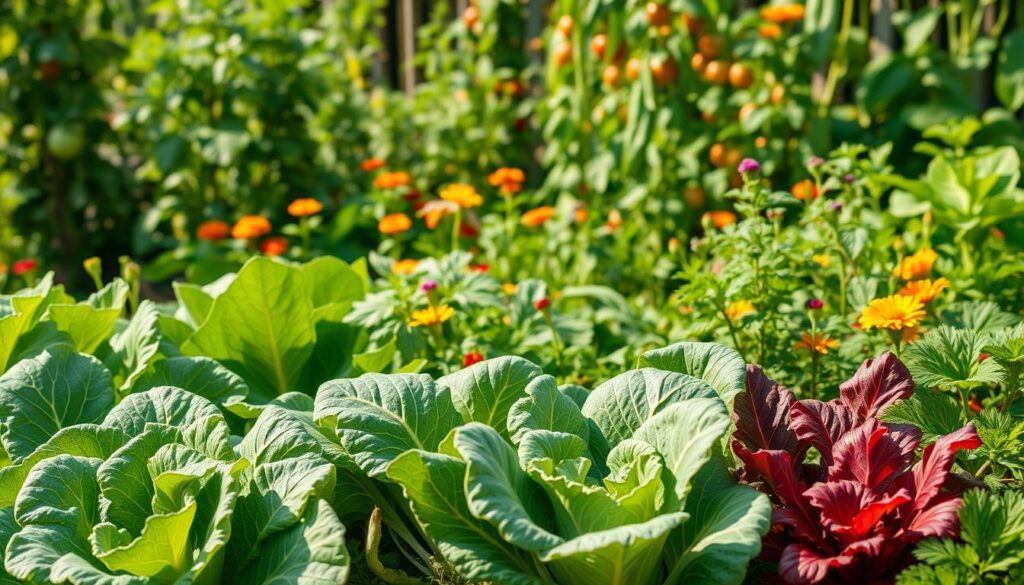
Utilizing this bok choy companion plants list enables you to create a harmonious garden where all plants support each other, leading to a more productive and healthy environment.
Growing Herbs with Bok Choy
Integrating herbs into your bok choy garden can significantly enhance both flavor and biodiversity. Choosing the right herbs that pair well with bok choy allows for a thriving garden ecosystem. Below are some excellent choices that complement bok choy beautifully.
Basil: A Perfect Match
Basil is one of the best herbs for growing herbs with bok choy. Its aromatic leaves enhance the flavor of dishes that include bok choy, making meals more delightful. Additionally, basil thrives in similar conditions, sharing nutrient needs but not competing aggressively for space. This harmonious relationship promotes a flourishing garden.
Dill: Enhancing Flavor
Dill stands out as another herb that pairs well with bok choy. Known for its unique flavor, dill not only enriches the taste of bok choy dishes but also attracts beneficial insects, such as pollinators, which play a vital role in your garden’s health. This matchmaking creates a flavorful experience while promoting a vibrant garden ecosystem.
Cilantro: Attracting Beneficial Insects
Cilantro is celebrated for attracting beneficial insects like ladybugs, which help keep pest populations in check. When you incorporate cilantro while growing herbs with bok choy, you create a balanced environment that secures your plants against harmful pests. The combination of these herbs fosters a thriving and diverse garden.

Vegetable Companions: A Winning Combination
When planning your garden, the selection of vegetable companions for bok choy can play a pivotal role in its success. Utilizing the right bok choy companion plants not only maximizes space but also enhances the overall health of your garden. Below are some of the best vegetable companions to grow alongside bok choy.
Carrots: Space Savers
Carrots thrive in the ground while bok choy flourishes above. This underground growth habit allows carrots to use soil resources that bok choy does not tap into. Planting these two together helps in utilizing garden space efficiently, making them perfect companions.
Peas: Nitrogen Fixers
Peas serve as excellent nitrogen fixers, enriching the soil with this essential nutrient. Bok choy benefits from this increased nitrogen, promoting healthier growth and vibrant leaves. Growing peas alongside bok choy ensures that your plants have a continuous supply of vital nutrients.
Radishes: Quick Harvests
Radishes mature rapidly, often ready for harvest before bok choy. This quick growth helps establish beneficial soil conditions and prepares the ground for other crops. Their presence can make a significant difference in your garden ecosystem, offering dynamic benefits while you wait for your bok choy to flourish.
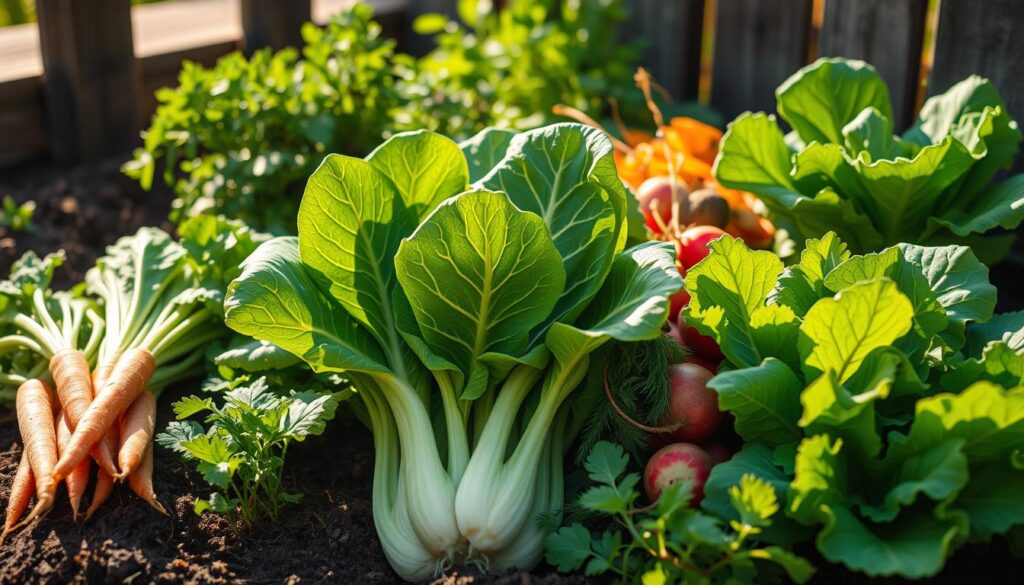
Flowers That Attract Beneficial Bugs
Incorporating flowers that benefit bok choy in your garden not only enhances its beauty but also draws beneficial insects essential for thriving plants. These flowers play a crucial role in attracting beneficial bugs with flowers, creating a dynamic ecosystem that supports your bok choy plants while keeping harmful pests at bay.
Marigolds: Deterring Pests
Marigolds are a gardener’s ally, known for their ability to deter many pests. Their strong scent repels nematodes and whiteflies, making them a great companion for bok choy. By planting marigolds nearby, you create an environment that discourages unwanted insects, thereby promoting healthier growth for your vegetables.
Nasturtiums: Adding Color and Protection
Nasturtiums not only bring striking colors to your garden but also serve as a natural pest deterrent. These vibrant flowers effectively repel aphids and cucumber beetles while providing valuable shade for bok choy. Their presence supports the growth of your plants by creating a more balanced ecosystem.
Zinnias: Luring Pollinators
Zinnias are excellent for luring pollinators into your garden, enhancing the cross-pollination of your flowers and vegetables. Attracting beneficial bugs with flowers like zinnias can promote higher yields in your bok choy. By cultivating this friendly habitat, you can expect stronger plants and a more plentiful harvest.

| Flower | Benefits | Pest Deterrent |
|---|---|---|
| Marigolds | Deters nematodes and whiteflies | Yes |
| Nasturtiums | Adds color, shade, and deters aphids | Yes |
| Zinnias | Lures pollinators for better yield | No |
Plants to Avoid with Bok Choy
Understanding which plants to avoid can significantly enhance your experience growing bok choy. Choosing the right companions influences not only the crop’s health but also its yield. Certain plants can inhibit growth or attract pests that are harmful to bok choy. It’s essential to identify these plants in advance to protect your garden’s overall vitality.
Top Culprits That Hinder Growth
When considering companion plants to avoid with bok choy, focus on cruciferous vegetables, which belong to the same family. Plants such as kale and cabbage can compete for nutrients and space. This competition can lead to poor growth or smaller yields for your bok choy.
Diseases and Pests Linked to Poor Companions
Aside from competition for resources, some plants attract pests detrimental to the health of bok choy. Mint, while aromatic, can draw unwanted insects that may spread diseases to your crop. Other brassicas, closely related to bok choy, may harbor similar pests that can wreak havoc. Being aware of these companion plants to avoid with bok choy will help you cultivate a healthier garden.
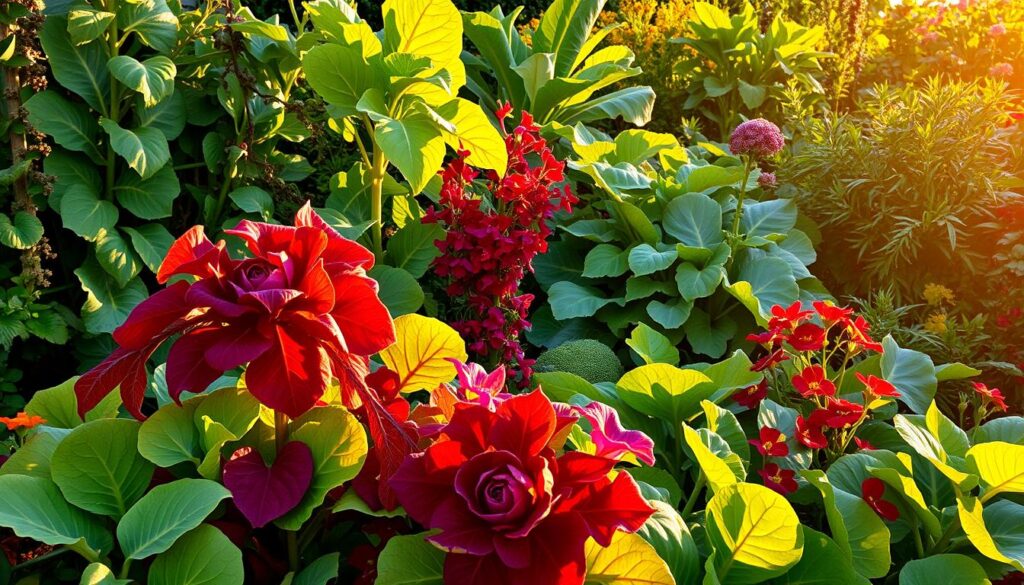
Seasonal Considerations for Growing Bok Choy
Timing plays a crucial role in successfully cultivating bok choy. Understanding local climate zones helps you determine the right planting times, which typically fall in early spring or late summer. By following these seasonal tips for bok choy, you can optimize your growing conditions and enjoy a thriving harvest.
Planting Times in Different Zones
Your specific planting schedule will depend on where you live. Here’s a helpful table outlining general planting times for different USDA hardiness zones:
| USDA Zone | Best Time to Plant | Notes |
|---|---|---|
| 3-4 | Late April to Early May | Can also plant in late summer for fall harvest. |
| 5-6 | Mid-March to Mid-April | Good for spring and again in late summer. |
| 7-8 | February to March | Fall plantings can be made in August. |
| 9-10 | Year-Round | Best in cooler months for optimal taste. |
Crop Rotation Tips
Implementing a crop rotation for bok choy helps maintain soil health and reduce disease occurrence. A full rotation strategy should incorporate various companion plants that can benefit from each other. This approach fosters improved soil fertility and robust plant growth, leading to a more fruitful gardening experience.
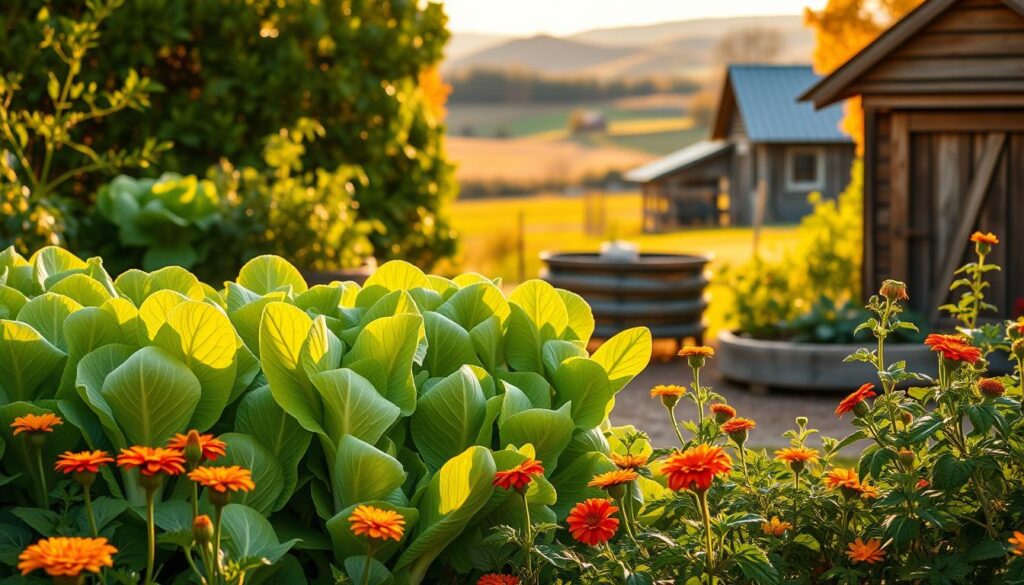
How to Plant Bok Choy with Companions
Planning a successful garden layout for bok choy can significantly enhance the benefits of planting bok choy with companions. Ensuring that each plant has enough space to flourish while receiving proper sunlight and airflow is crucial. The right arrangement maximizes growth and minimizes competition among plants.
Layout Ideas for Your Garden
When designing your garden layout for bok choy, consider grouping companion plants based on their growth patterns and needs. For example:
- Place short herbs like basil or cilantro alongside taller bok choy plants. This allows them to share sunlight without casting too much shade.
- Space out root vegetables such as carrots, which occupy the ground below, enabling bok choy to thrive above.
- Incorporate flowers like marigolds at the edges of your garden bed to attract pollinators and deter pests, creating a balanced ecosystem.
Spacing and Watering Requirements
Proper spacing between each plant is important to ensure healthy growth. Aim for the following spacing guidelines:
| Plant Type | Recommended Spacing (inches) |
|---|---|
| Bok Choy | 12-18 |
| Herbs (Basil, Dill, Cilantro) | 6-12 |
| Carrots | 3-4 |
| Marigolds | 8-10 |
Regular watering is essential, especially during warm months. Check the moisture levels frequently, as companion plants may have varying water requirements. By monitoring these needs, you ensure a thriving and productive garden.

Harvesting Bok Choy and Its Companions
To maximize the flavor and quality of your crop, precise timing plays a key role when harvesting bok choy. Understanding the maturation timelines of bok choy and its companion plants enhances your gardening experience. Some plants mature faster, making it essential to stay vigilant during the harvesting period.

Timelines for Each Plant
Bok choy typically requires about 45 to 60 days from seed to harvest. It’s advisable to start checking for readiness around the 30-day mark, especially if you planted a faster-growing variety. Most companion plants like radishes and lettuce can be harvested earlier, within 25 to 40 days, making them perfect partners in your garden. Establish a schedule to ensure everything is harvested at its peak.
How to Ensure a Successful Harvest
When harvesting bok choy, use sharp tools to minimize damage to surrounding plants. Opt for cooler times of the day to reduce moisture loss, ensuring you maintain the integrity of your vegetables. This approach supports the health of your entire garden ecosystem and improves the outcome of companion plant harvesting. Adopting these practices allows for a bountiful and flavorful harvest of both bok choy and its companions.
Common Problems and Solutions
Gardening can present its fair share of challenges, particularly when it comes to common issues with bok choy. Addressing these problems promptly can make a world of difference in achieving a healthy, bountiful harvest. Understanding effective pest management and soil improvement techniques will significantly aid in solving gardening problems associated with growing bok choy.
Pest Management Strategies
Pests pose a real threat to your bok choy plants, often leading to reduced yields and unhealthy crops. Utilizing integrated pest management strategies is essential. Consider the following methods:
- Introduce beneficial insects like ladybugs and lacewings that prey on harmful pests.
- Encourage plant diversity by incorporating companion plants that can repel pests.
- Regularly inspect your plants to identify pests early and apply organic treatments, such as neem oil or insecticidal soap, as needed.
Soil Improvement Techniques
Healthy soil is the foundation of successful bok choy growth. Poor soil quality can lead to stunted plants and susceptibility to diseases. Here are several effective ways to enhance your soil:
- Add organic amendments like compost or well-rotted manure to boost nutrient levels.
- Consider planting cover crops during the off-season to improve soil structure and fertility.
- Test soil pH and adjust accordingly to ensure it falls within the ideal range for bok choy growth.

Long-term Maintenance of Bok Choy and Companions
Successful gardening relies on long-term care for bok choy and its companions. To ensure your plants flourish, it is essential to implement consistent and attentive maintenance routines that support healthy growth.
Regular Care Practices
Daily monitoring of your garden is crucial. Regular watering should be prioritized, maintaining consistent moisture levels, especially during dry spells. Incorporating weeding into your weekly routine prevents competition for nutrients and water. Observing your plants daily allows you to spot early signs of distress, such as yellowing leaves or pests, enabling timely interventions.
Fertilization Schedules
Establishing a fertilization schedule is key to the maintenance of bok choy and companions. Consider organic fertilizers that provide essential nutrients throughout the growing season. Applying a balanced fertilizer every four to six weeks can significantly enhance growth and productivity. Creamy compost can add necessary nutrients while improving soil structure, promoting a healthy ecosystem in your garden.
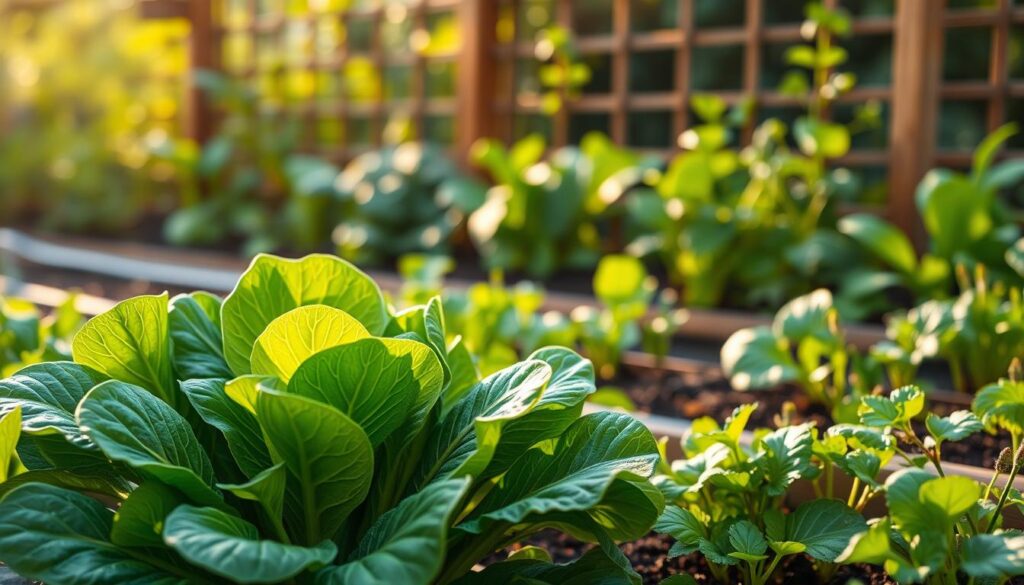
Conclusion: Celebrating Your Companion Planting Success
Your journey with companion planting has been nothing short of transformative, allowing you to explore the diverse benefits of companion planting while nurturing your bok choy and its companions. Reflecting on the progress you’ve made throughout the growing season can be incredibly rewarding, helping you appreciate the connections between plants and their environments. As you’ve witnessed, successful gardening is not just about the plants themselves, but also the relationships that flourish in your garden.
